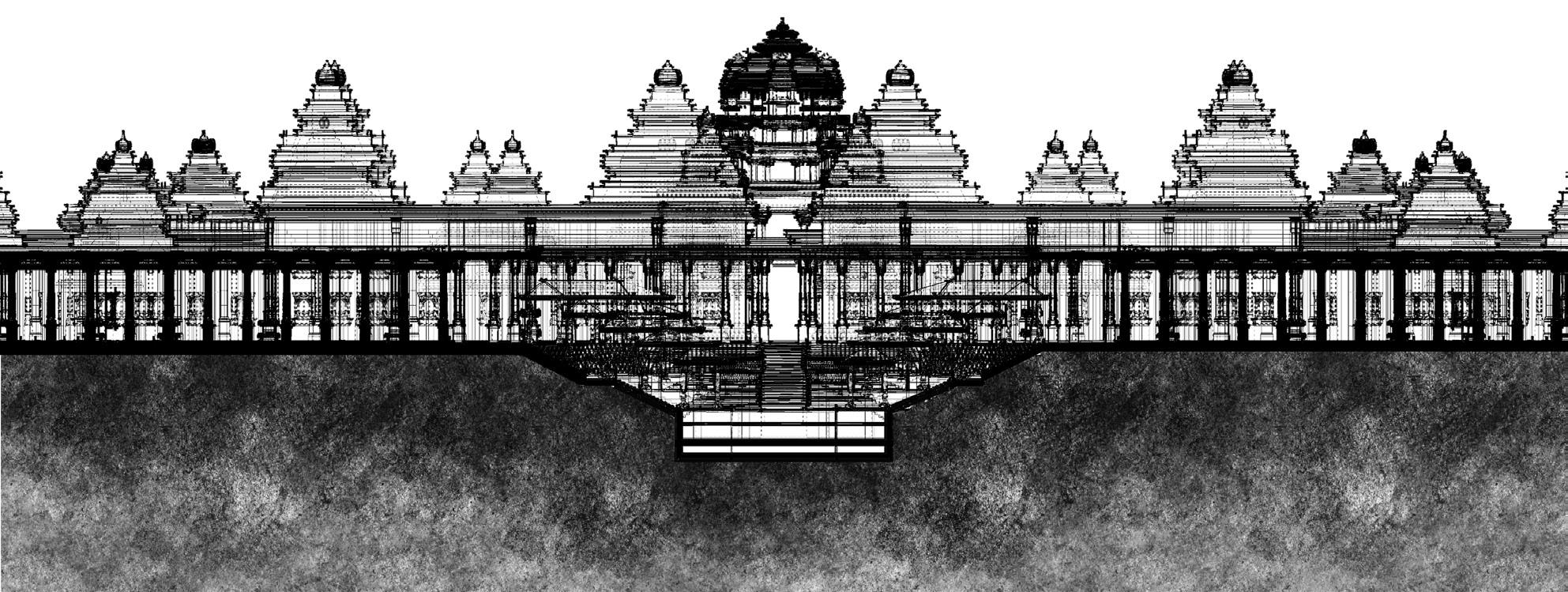Textured Narratives
Fostering Community Through Stone Craft, Art and Architecture
ARCHITECTURAL DESIGN THESIS


SOUMYA SUJATHAN
soumyasujathan@gmail.com
“Nice building. Then what?” -Frank Gehry +91 7356366185

Fostering Community Through Stone Craft, Art and Architecture


SOUMYA SUJATHAN
soumyasujathan@gmail.com
“Nice building. Then what?” -Frank Gehry +91 7356366185
Fostering Community Through Stone Craft, Art and Architecture
An Architectural Design Thesis
Submitted by, Soumya Sujathan
Guided by, Ar. Sherin S Varikkatt
Thesis Mentor & coordinator

Muvattupuzha
Affiliated to, Mahatma Gandhi University Kottayam
In partial fulfillment of the requirements for the degree of Bachelor of Architecture
September 2024
© SEED APJ Abdul Kalam School of Environmental Design Muvattupuzha
Declaration
I hereby declare that the work presented in the thesis titled,
Textured Narratives,
Fostering Community Through Stone Craft, Art and Architecture
has been done by me under the guidance by my mentor, Ar. Sherin S Varikkatt
The content of this Thesis (text, figures, illustrations, data etc.) is original and is the outcome of my own work. Any relevant material taken from open source for this study has been referred and cited, as per norms and practices. All collaborations and critiques that have contributed to giving the thesis its final shape is duly acknowledged and credited.
Soumya Sujathan
Bachelor of Architecture
SEED APJ Abdul Kalam School of Environmental Design,Kerala
Fostering Community Through Stone Craft, Art and Architecture
Abstract
The thesis explores the regeneration of stone craft communities by integrating traditional craftsmanship into contemporary architectural design. It addresses challenges faced by artisans, such as declining demand and skill loss. The research proposes a holistic strategy for skill development, product marketing, and incorporating stone craft into architecture.
Aim
This thesis explores how architectural interventions can revitalize traditional stone craft communities by preserving and promoting their skills. It examines how buildings can integrate stone craftsmanship and serve as platforms for artisans.
Scope/Relevance
The primary objective of the project is to revitalize stone craft communities by creating a platform where artisans can practice, innovate, and showcase their craftsmanship. This involves setting up workshops, exhibition spaces, and marketplaces where the products can be sold, ensuring direct economic benefits to the artisans. The scope extends to utilizing these stone-crafted products as integral architectural components of the building, reflecting their functional and aesthetic qualities in the built environment.
Site/Context
The site context is deeply influenced by the repetition of its architectural character, which echoes the traditional styles and craftsmanship inherent to the region. The regional context, rich in cultural heritage, plays a vital role in shaping the built environment, where the use of local materials and techniques reflects the area’s historical significance. By repeating forms, textures, and design elements that are deeply rooted in the region’s architectural identity, the new interventions aim to harmonize with the existing structures, creating a cohesive dialogue between the old and the new. This approach not only preserves the cultural value but also enhances the architecture by embedding the essence of the local context into every aspect of the design.

The primary objective of the project is to revitalize stone craft communities by creating a platform where artisans can practice.
The scope extends to utilizing these stone-crafted products as integral architectural components of the building.
This thesis explores how architectural interventions can revitalize traditional stone craft communities by promoting their skills.
The thesis explores the regeneration of stonecraft communities by integrating traditional craftsmanship
It addresses challenges such as declining demand
The site context is deeply influenced of its architectural characterand


stonecraft craftsmanship
challenges faced by artisans, demand and skill loss.
influenced by the repetition traditional styles
Repeating forms, textures, and design elements that are deeply rooted in the region’s architectural identity. The research proposes a holistic strategy for skill development, product marketing, and incorporating.
It examines how buildings can integrate stone craftsmanship and serve as platforms for artisans.
PROPER WORKING SPACE
This involves setting up workshops, exhibition spaces, and marketplaces where the products can be sold.


















Beach
Due to summer holidays in May and the Dance Festival and pleasant weather in November and December, Mamallapuram had a surge in visitors prior to the pandemic.
More equally distributed tourist visits occurred in 2022, with December accounting for 18% of total annual foot traffic.
The majority of day tourists to Tamil Nadu come from other Indian states or from within the state. Usually from France, Germany, Malaysia, and the UK, overnight visitors remain for one to two days.
Visitation to Mahabalipuram





Of the 2.8 million people living in the Chengalpattu district, 69% live in urban areas. Compared to Tamil Nadu, which has 555 people per square kilometer, the average population here is 1,045 people. With 15,172 residents, Mamallapuram boasts a remarkable literacy rate of 85%, which is higher than the state average.






The site features several small water bodies, including ponds, streams, or fountains. These will be incorporated into the design to enhance the site’s ecological value and aesthetic appeal. The water bodies will be designed to serve as focal points for relaxation and contemplation, with wellmaintained surroundings that invite visitors to engage with these natural features. The design will ensure that these water features are sustainably managed and harmoniously integrated into the overall landscape.
The site is situated within a broader urban context with a rich historical and cultural backdrop. The design will focus on creating smooth transitions between the park and its surrounding environment. This includes establishing pathways and access points that connect the park with nearby streets, public transport, and neighboring areas. The design will also consider how the park relates to the existing urban fabric, ensuring that it complements and enhances the surrounding context. The site is bordered by a series of historically significant buildings, which form an important visual and cultural axis. The design will leverage this axis to create meaningful connections between the park and these structures. Sightlines, pathways, and public spaces will be oriented to highlight and celebrate these historical landmarks. The aim is to respect and enhance the historical significance of the surrounding buildings while integrating them into the park’s design narrative. To maximize the park’s appeal as a tourist destination, the design will incorporate a range of amenities and features. These may include educational installations, interactive exhibits related to local history and ecology, performance spaces, and cafes or shops. The park will offer a diverse range of activities and experiences, from leisurely strolls along the water bodies to cultural events and educational programs. The goal is to attract visitors while providing a welcoming space for both tourists and locals.














The roof configuration of each segment follows a structured approach, with roof heights designed according to the Fibonacci Sequence (5, 8, 13), creating natural proportional growth. This sequence guides level variations, establishing dynamic rooflines that reflect the Golden Proportion. Wall heights also adhere to the Fibonacci Sequence (3, 5, 8), proportional consistency. This method integrates mathematical beauty into the design, enhancing visual appeal and spatial harmony.






























An open, column-supported workspace for craftsmen, featuring effective al zones specifically designed for diverse carving tasks, ensuring an organized,

effective ventilation to manage stone dust, with well-defined functionorganized, efficient, and comfortable environment for precision and creativity.

The cluster design integrates symmetry, proportion, pathways leading to the tial connection. This arrangement emphasizes balance, continuity, and aesthetic




PHYSICAL MODEL ( Single Cluster Details )

soumyasujathan@gmail.com